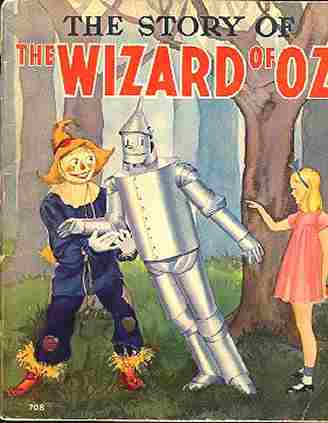 The last weekly Robin discussed how the glimpses of the future in Grant Morrison’s Batman scripts show life in Gotham City getting more grim and ruthless, despite Dick Grayson being a relatively friendly Batman.
The last weekly Robin discussed how the glimpses of the future in Grant Morrison’s Batman scripts show life in Gotham City getting more grim and ruthless, despite Dick Grayson being a relatively friendly Batman.
Of course, that’s only one possible future, but it’s still cause for worry—which is, after all, what superhero comics are designed to make us do in the middle of a story.
But I think the quality of life in the future has particular importance for the character of Robin, especially as embodied by the two longest-tenured Teen Wonders, Dick Grayson and Tim Drake. As Fabian Nicieza, currently scripting Red Robin, has explained:
The concept of Robin defines the nature of the legacy in the DCU and with that, implies hope for the future…
Put another way, if Robin inherits a lousy future, the DC Universe at large has a lot of pain to look forward to as well.
One example of this pattern appeared in the
Titans magazines of the early 1990s. In an one-off annual,
Marv Wolfman introduced a possible future in which the world will turn evil, and Dick Grayson/Nightwing will be the only familiar hero still fighting. This Nightwing will lack his friends, his lover, his mentor. He’ll be an outlaw against an oppressive state. And because so many comics readers
identify with Dick Grayson, that future feels especially bad.

But it can get even worse. How? If Dick Grayson himself will get worse. That’s where Wolfman went next, after DC asked him to expand on that storyline. The second-tier
Team Titans magazine showed that future Nightwing turning evil. He will take a new name: Deathwing. And in case that won’t be evil enough, he will also adopt an edged weapon, long straggly hair, and a costume that exposes his nipple rings.
Deathwing comes back to the present and helps to break up the familiar Dick Grayson’s wedding to his longtime girlfriend Koriand’r. Eventually that whole unsuccessful storyline imploded, and that future was mercifully canceled. DC declared that Deathwing wasn’t actually Dick Grayson at all, and shuffled the character off to bureaucratic oblivion. Some people still
wonder where he’s gone.
But the short, unhappy career of Deathwing had served its purpose of telling readers how awful that alternate future would be, how glad we should feel that it won’t come to pass. Because if one of the beloved
Robins will turn evil, the whole DC Universe is messed up.
Other writers have gone to the same well.
Frank Miller’s
The Dark Knight Strikes Again (2001-02) was a sequel to his beloved but out-of-continuity
The Dark Knight Returns. As far as I can tell, Miller set out to mess up the DC Universe as much as possible. So the sequel tells us that the first story’s new Robin,
Carrie Kelley, will give up that identity and go around in a catsuit.
Superman and Wonder Woman will have aerial sex. Many other heroes will become dejected or depowered.
At the end, Miller had only one place to go, only one more card to play: make Dick Grayson evil. I suppose that’s a SPOILER, but this whole tale has the sour taste of spoiled milk from the start.

In the early 2000s,
Geoff Johns wrote a story about the Teen Titans group that included Tim Drake meeting their possible future selves. Embittered by their losses, those young heroes will become ruthless tyrants, oppressing villains and the western US as a whole.
And the leader of that future team? It will be Tim, taking the mantle of the late Batman—but as a murderous, gun-toting vigilante. Later, Sean McKeever wrote a follow-on to this “Titans Tomorrow” storyline. Both tales gain their power from the notion of a corrupted Robin, and the young Tim has to prevent that future from happening. Because if Robin doesn’t
grow up well, there’s no hope for the rest of us.
The most recent example of this pattern is the current
Batman Beyond limited series, set in the future and inspired by the past TV cartoon. This story, scripted by Adam Beechen, has just shown that its villain Hush is Dick Grayson, who will—wait for it—become evil! (Or will he? This is a six-part story, and it’s only up to issue #4. There’s no way the series’s big reveal and final twist happens only two-thirds of the way through.) On the plus side, once a DC storyline shows a future Dick Grayson (or Tim Drake) as evil, there’s nowhere further down we can go.
 Last year around this time, I noticed a costume emporium’s ad on a subway car. Among the outfits it showcased was one rather like this.
Last year around this time, I noticed a costume emporium’s ad on a subway car. Among the outfits it showcased was one rather like this.













 In other words, the Max Roboto storyline suggests that—unlike Bruce Wayne’s Batman, as Sims describes him—Dick Grayson’s Batman doesn’t change the world for the better. Despite his efforts and friendliness, it gets worse. Dick might save Damian by making him Robin, as the Batman and Robin magazine suggests, but he can’t preserve Batman’s ideal in Damian’s hands. Gotham becomes a less nice place despite having had a nice Batman.
In other words, the Max Roboto storyline suggests that—unlike Bruce Wayne’s Batman, as Sims describes him—Dick Grayson’s Batman doesn’t change the world for the better. Despite his efforts and friendliness, it gets worse. Dick might save Damian by making him Robin, as the Batman and Robin magazine suggests, but he can’t preserve Batman’s ideal in Damian’s hands. Gotham becomes a less nice place despite having had a nice Batman.





